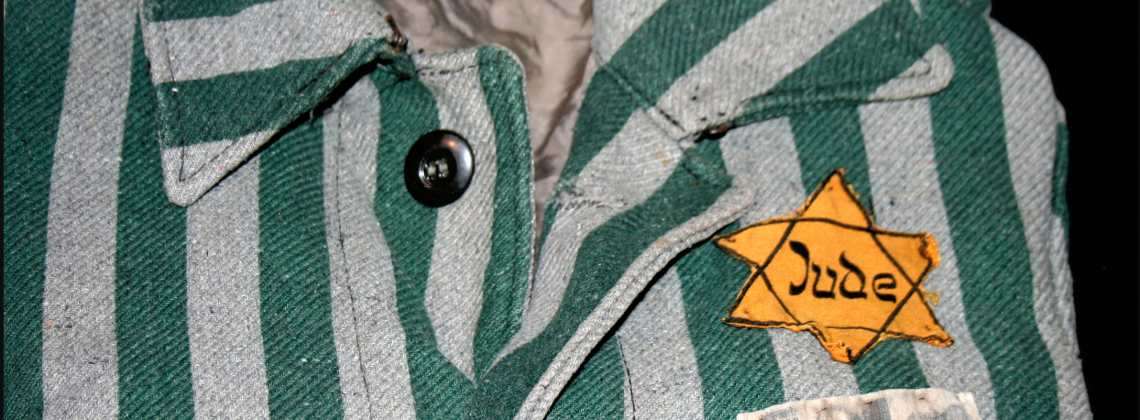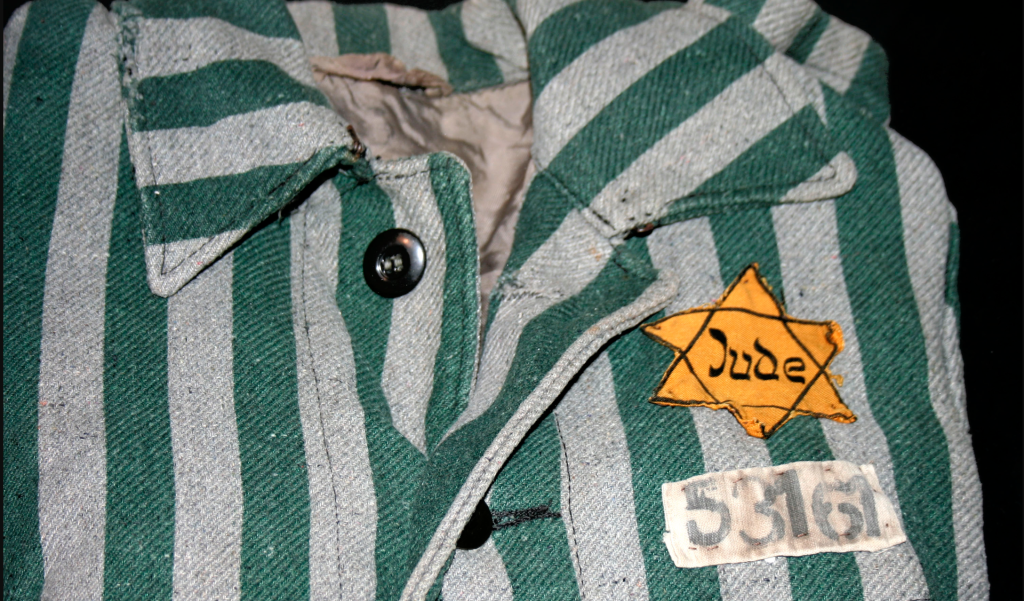

The Holocaust continues—as it must—to haunt
I’ll be visiting Auschwitz again this year. In 2014 I led a group of university students on a Holocaust Studies tour through Germany and Poland. The reflection papers and the conversations it generated prompted me to lead another the following year. This year’s trip will be my eleventh! In the intervening decade I have reoriented my professional interests, developed new courses, and started a cross-disciplinary academic program built around the question, “What gives humans value?” I still live in the shadow of that first visit to Auschwitz.
This January 27, International Holocaust Remembrance Day, marks eighty years since the camp’s liberation. Recent events in the Middle East and the current surge of global antisemitism have led to renewed interest in the Holocaust. As unsatisfactory as it is to reduce this multimodal event, dispersed across time and location, down to one day of remembrance, it does serve to fix our attention. The occasion invites our collective reflection on one of the darkest pages in the sordid book of human history.
Auschwitz is a constellation of several camps. The best known is Auschwitz II, or Auschwitz-Birkenau. Here sits the iconic railhead, infamous selection platform, ruins of multiple gas chambers, and ordered rows of exposed chimneys stretching out across vast open fields. In some contrast is Auschwitz I, a collection of twenty-two brick buildings originally constructed during World War I to house transient workers. But in World War II, about six months after the Germans overran the Polish village of Oświęcim (and Germanized it by renaming it Auschwitz), the SS decided to convert this location into a concentration camp to house, torture, and work to death the Polish intelligentsia, political opponents, and Jews that were now inside the borders of the Third Reich. A couple kilometers away is the Birkenau camp, built mid-war in response to the “Final Solution.” Unlike at Birkenau, all the buildings at Auschwitz I still stand. After the war several were retrofitted to house the gathered evidence of the atrocities—the overflowing piles of clothing, shoes, personal effects, and even human hair that were left behind at the camps or stashed in nearby warehouses by the fleeing SS.
Hundreds of visitors make their way through these buildings every day to see these mounding testimonies to dehumanization. The different forms of evidence invite the horror of trying to imagine the unspeakable in various ways. The heaping piles of assorted shoes and the massive, tangled nest of eyeglasses, for instance, pull me away from the abstractions of statistics and of genocide. These were real flesh and blood people, persons with bodies, minds, and souls. The towering piles of luggage, each one dutifully labeled by a trusting owner with name and address, remind me that deception was fundamental to these crimes. Perversely, the baggage alone remains. It’s the owners who were stolen.
Misleading the victims of places like Auschwitz, Treblinka, Sobibor, and Belzec was necessary to create a smooth killing apparatus. How else could one use only a few dozen workers to annihilate upwards of 14,000 people a day, every day, for months on end? To bring an operation like this to scale, fraudulently recruiting the trust of the victims was not just expedient—it was practically necessary.
But that was not the only deception at work in those camps. The killers themselves were also deceived. Of the many factors that contributed to dehumanization, surely a necessary one was the mistaken belief that humans should be subject to “selection.” In the Nazi mind, the system of natural selection—the process that had produced the most exalted of all beings, the Aryan—had in recent centuries been hijacked by Jewish ideas cleverly construed to shield themselves from its excising knife. The Nazis argued that all attempts to universalize the human condition, from ancient Genesis and Paul’s egalitarian claims in Galatians to the modern French Revolution, were dreamed up by the parasitic Jews. This ideological poison, perverting nature’s most basic law of selection, had seeped into the erstwhile pure streams of elevated German blood and culture. The Nazis believed, though, that they and their fellow Germans had finally awoken from that spell. A savior had arrived to restore the natural order and usher in a new age celebrating health and beauty. The means of restoring this order would be admittedly distasteful in the moment, but as historians like Alon Confino and Johann Chapoutot have shown, the Nazis were absolutely convinced that this “struggle” would pay off handsomely for Germany’s future.
But we must remember that the Nazis were not the only ones to be deceived. They are most distinguished only by the rigor of their implementation. Once Darwin, Haeckel, and others convinced us that humans were merely the products of selection, the implications of this new biological truth were quickly assimilated and actualized. The philosophy of Social Darwinism emerged, and the science of eugenics was born. A biological revolution (or crusade, if you prefer) sprang to life and reached around the globe. But it was in the fertile political soil of post-Great-War depression-era Germany where these ideas most enthusiastically flourished and reached their full expression.
As we consider the Holocaust today, I wonder if we realize the full length and breadth of its shadow, as that too is deceptive. Some might suggest that we can escape it, we can learn our lessons and move on under a new sun. I have my doubts. Holocaust historian Michael Marrus reminds us that the practice of drawing lessons from history can easily become an exercise in confirmation. He has a point. When today’s rival politicians are likened to Hitler by opposing sides, our desire to score rhetorical points exposes our self-serving interpretations of the past—and a disdain for truth. I am also concerned that a claim to have learned anything from the Holocaust only serves to instrumentalize the unjust death of millions into an object lesson. Israeli writer Aharon Appelfeld suggests that the only appropriate response is silence: “. . . any ‘answer’ is tiny, meaningless, and occasionally ridiculous.”
Often my students, after a close encounter with the humanity of the perpetrators, catch a glimpse of their own reflection and begin to introspect: “In what ways might I have been beguiled and ensnared?” This level of vulnerability is priceless and difficult to achieve. It’s so easy, even while standing in front of a memorial, touring a museum, or walking through a concentration camp, simply to see the perpetrators as disgusting inhuman “others.” But if we look carefully and honestly into their faces, a haunting family resemblance emerges. If there is a lesson to be learned it is that this is a story about us; all of us. We must always live in the shadow of Auschwitz.
Paul Nesselroade is Professor of Psychology, Psychology Department Chair, and Director of the Honors Program at Asbury University. Information about his study abroad experiences with students can be found at his website.
Image: Wikimedia
Horrible, disgusting, inhuman actions by humans does raise the question of-What is sin? If humans are only flesh and blood, guided
by a brain and thought and emotions, with no spiritual element, then-the Final Solution-is just as real today as it was in Auschwitz 2.
I would even say PP Mills, and ignorant college students, screaming -From the River to the Sea- are very real evidence of such.